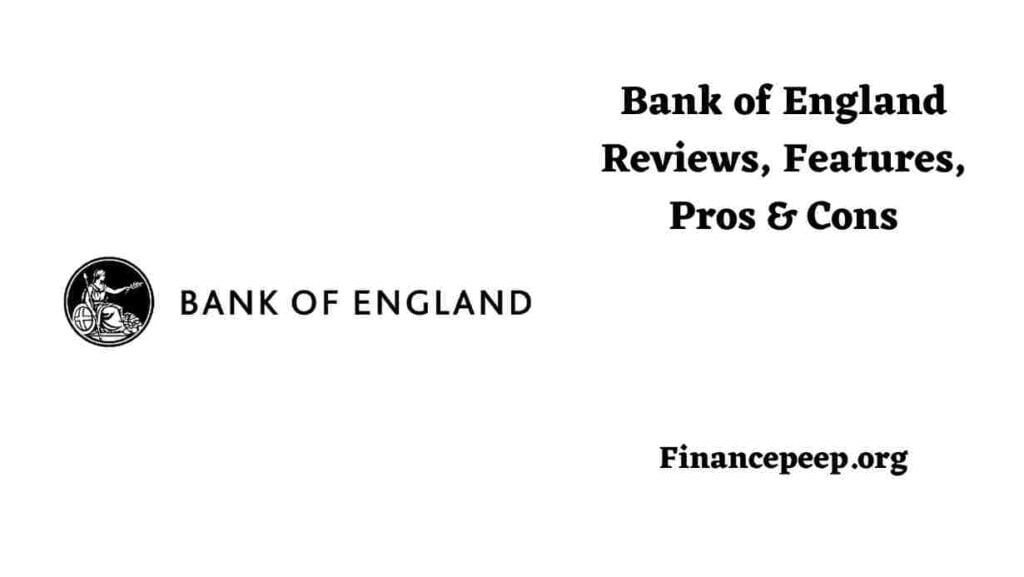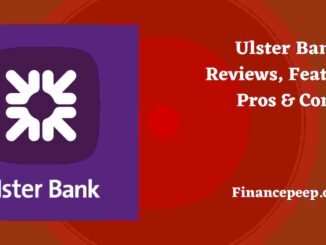
Bank of England
The management of UK monetary policy and upkeep of the money supply in the economy are the responsibilities of the Bank of England. Governmental interference does not affect the Bank of England.
The government can, however, choose the members and decide what the inflation objective should be. However, the Bank must be crucial in overseeing the economy and finance sector.
Overview of Bank of England
The Bank of England is commonly known as the National Bank of the United Kingdom and the inspiration for most contemporary central banks. The eighth-oldest Bank in the world was established in 1694 to serve as the banker for the Government and is still one of the bankers for the Government of the United Kingdom. From its founding in 1694 until the Attlee Ministry’s nationalization in 1946, it was privately held by investors.
In 1998, the Bank changed its status to that of an independent public organization, entirely owned by the Treasury Solicitor on behalf of the government, with the responsibility to support the economic goals of the ruling administration while acting independently to uphold price stability.
The Bank, one of only eight institutions permitted to print money in the UK, has a monopoly on printing money in England and Wales and controls printing money by commercial banks in Scotland and Northern Ireland.
Monetary policy management has been delegated to the Bank’s Monetary Policy Committee. If necessary in the public interest and due to extraordinary economic situations, the Treasury may issue orders to the committee; however, Parliament must approve such measures within 28 days.
Since 1734, the Bank’s headquarters have been located on Threadneedle Street in London’s primary financial center, the City of London. A satirical cartoonist named James Gillray coined “The Old Lady of Threadneedle Street” for the building in 1797. Bank Junction is the name of the nearby road intersection.
The Bank of England still oversees some public-facing activities, such as exchanging obsolete bank notes, even though it has long since stopped providing consumer banking services as a regulator and central Bank. The Bank granted its employees access to personal banking services up to 2016.
How the Bank of England Work
Exactly how does the Bank of England operate?
The Bank of England accepts responsibility for ensuring the health of the British economy and financial system as the country’s leading monetary and economic body. The following are the BoE’s primary duties:
- monitoring the state of the economy nationally
- issuing banknotes and setting the British Pound Sterling (GBP) exchange rate
- establishing and carrying out monetary policy by the government’s
- Implementing economic measures to control economic growth
- maintaining and regulating the integrity of financial markets, financial institutions, and banks
- being the last-resort lender in financial problems
- United Kingdom’s responsibility for the gold reserves
Function of the Bank of England
The real job of the Bank of England is to guarantee and uphold monetary and financial stability. The cooperation of the FPC and the PRA is necessary to promote financial stability, whereas the MPC maintains economic stability.
1. Financial stability
By identifying systemic risks and assisting the government’s economic strategy, the FPC maintains the functional health of the country’s financial system. To ensure the honesty and fairness of the financial services offered to British consumers, the PRA, on the other hand, regulates banks, financial institutions, and financial markets.
2. Monetary Stability
To maintain monetary stability, the MPC must keep economic prices steady and manage the pound’s value. It achieves its goals by organizing the nation’s monetary policy, determining the UK interest rates, and intervening in the economy when warning signs are present.
The governor chairs the nine-member committee, which also has the chief economist of the BoE, three deputy governors, and four other non-executive members. Each member’s vote is equal, and a simple majority decides decisions.
Although the government’s economic strategy is frequently considered for strategic coherence, the MPC has complete authority over monetary policy. The Treasury, which can compel the MPC to make particular judgments if necessary, still limits the committee’s independence about interest rates.
3. The administrator of Official Gold Reserves
The Bank of England serves as the official custodian of gold reserves for the UK and other nations. Roughly 3% of all gold ever mined in history is thought to be in the Bank’s possession. Nearly 400,000 gold bullion bars, worth $142 billion, were in the Bank’s inventory as of April 2014.
4. Final resort lender
As the UK’s central Bank, the Bank of England serves as the commercial banks’ lender of last resort when they run out of funds. This function supports the financial system’s ability to remain liquid and credible. As a well-known illustration, Northern Rock Bank in the UK had to borrow money from the BoE when facing severe financial difficulties.
Hierarchy of the Bank of England
The Governor, the Court of Directors, and a few subcommittees make up the hierarchy of the Bank of England. The Governor of the Bank of England is chosen from among the Bank’s employees, serving on all committees and in the most senior executive role. The Bank’s primary administrative body, the Court of Directors, directs all operations, plans, and resource allocations. Several special subcommittees include:
- The Monetary Policy Committee (MPC) decides and implements interest rates.
- The Financial Policy Committee (FPC) ensures stability in the financial system.
- The Prudential Regulation Authority (PRA) oversees the financial services sector.
Bank of England Contact Info
You can reach the Bank of England every weekdays from 9 am to 5 pm by dialing 020 3461 4444.
If you know the name of the individual or department you want to contact, kindly use this number. Or send a fax to 020 3461 4771.
Note that you can always contact them by phone, email, mail, or social media:
Write to them at Bank of England, Threadneedle St, London, EC2R 8AH, or call 020 3461 4878 (Monday through Friday, 10 am to 12 noon).
@bankofengland on Twitter, both Facebook @bankofengland.co.uk and a new window opens a fresh window
Frequently Asked Questions
Who is the owner of the Bank of England?
Some individuals mistakenly think that the Royal family owns the Bank of England. However, that is untrue. Furthermore, it is false that the Bank of England is a company or is owned by a collection of private persons.
The Bank of England was a corporation until 1946, and private individuals held all the existing shares. There were around 17,000 stockholders when the Bank was nationalized in 1946, but fewer than one-third had shares worth more than £1,000.
The UK government, notably the HM Treasury, now owns the central Bank. However, the Bank of England continues to be autonomous and unaffected by the government.
Does having the Bank of England have any benefits?
Yes, the central Bank is the lender of last resort, even if that isn’t its primary duty. This is one of the most crucial reasons why there should be a central bank.
You go to the Bank if you need a loan, but where does the Bank go when it needs a loan? Of course, the central Bank, in this case, the Bank of England in the UK, is the place to go. Historically, runs on commercial banks have happened, and these frantic withdrawals can put a bank out of business in minutes. When this occurs, the central Bank is ready to sustain the whole financial sector.
How exactly does the Bank of England operate?
The Bank of England performs several duties as the country’s central Bank that are essential to the smooth operation of the economy.
Some of these duties include the production of money, oversight of the banking sector, preservation of price stability, and promotion of economic expansion. They carry out these duties by printing actual money, adjusting interest rates to promote or prevent inflation and growth, and issuing rules that specify how UK commercial banks must carry out their duties.
How can I start an account with the Bank of England?
Two documents—one proving your identity and the other your address—must create a UK bank account. This holds both offline and online. Identity verification is easy to do. All you need is a valid passport, a driver’s license, or an identity card (if you are an EU citizen).
Does the Bank of England have any locations?
In reaction to the financial crisis of 1825 to 1826, which failed numerous rural and provincial banks, the first Bank of England branches were set up in 1826. Their need to further restrict the circulation of banknotes to avert another crisis was one of the primary drivers behind establishing branch banks.
Conclusion
The Bank of England prints banknotes (cash) and manage many other payment methods you employ, such as using a debit or credit card. To maintain the purchasing power of your money, they also endeavor to keep consistent living expenses. Another strategy they use is altering the UK’s prime interest rate.
I believe you now have a better understanding of what the Bank of England is!



Be the first to comment